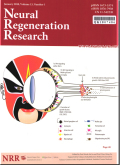- 钛学术文献服务平台 \
- 学术期刊 \
- 医药卫生期刊 \
- 神经病学与精神病学期刊 \
- 中国神经再生研究(英文版)期刊 \
Bimanual motor skill learning and robotic assistance for chronic hemiparetic stroke: a randomized controlled trial
Bimanual motor skill learning and robotic assistance for chronic hemiparetic stroke: a randomized controlled trial
基本信息来源于合作网站,原文需代理用户跳转至来源网站获取
摘要:
Using robotic devices might improve recovery post-stroke, but the optimal way to apply robotic assistance has yet to be determined. The current study aimed to investigate whether training under the robotic active-assisted mode improves bimanual motor skill learning (biMSkL) more than training under the active mode in stroke patients. Twenty-six healthy individuals (HI) and 23 chronic hemiparetic stroke patients with a detectable lesion on MRI or CT scan, who demonstrated motor deficits in the upper limb, were randomly allocated to two parallel groups. The protocol included a two-day training on a new bimanual cooperative task, LIFT-THE-TRAY, under either the active or active-assisted modes (where assistance decreased in a pre-determined stepwise fashion) with the bimanual version of the REAplan? robotic device. The hypothesis was that the active-assisted mode would result in greater biMSkL than the active mode. The biMSkL was quantified by a speed-accuracy trade-off (SAT) before (T1) and immediately after (T2) training on days 1 and 2 (T3 and T4). The change in SAT after 2 days of training (T4/T1) indicated that both HI and stroke patients learned and retained the bimanual cooperative task. After 2 days of training, the active-assisted mode did not improve biMSkL more than the active mode (T4/T1) in HI nor stroke patients. Whereas HI generalized the learned bimanual skill to different execution speeds in both the active and active-assisted subgroups, the stroke patients generalized the learned skill only in the active subgroup. Taken together, the active-assisted mode, applied in a pre-determined stepwise decreasing fashion, did not improve biMSkL more than the active mode in HI and stroke subjects. Stroke subjects might benefit more from robotic assistance when applied "as-needed." This study was approved by the local ethical committee (Comité d'éthique médicale, CHU UCL Namur, Mont-Godinne, Yvoir, Belgium; Internal number: 54/2010, EudraCT number: NUB B039201317382) on July 14, 2016 and was registered with ClinicalTrials.gov (Identifier: NCT03974750) on June 5, 2019.

推荐文章
基于SKILL的EDA系统二次开发技术探讨
EDA
SKILL
Cadence
设计库
用SKILL语言实现PCB的原理图还原
PCB
原理图还原
Concept HDL
SKILL语言
消息传递系统
E-Learning理论研究的现状与思考——对我国2000年以来E-Learning研究的统计与分析
E-Learning
理论研究
现状
思考
基于情感计算的E-Learning模型框架
情感计算
E-Learning
和谐人机环境
内容分析
关键词云
关键词热度
相关文献总数
(/次)
(/年)
文献信息
| 篇名 | Bimanual motor skill learning and robotic assistance for chronic hemiparetic stroke: a randomized controlled trial | ||
| 来源期刊 | 中国神经再生研究(英文版) | 学科 | 医学 |
| 关键词 | |||
| 年,卷(期) | 2021,(8) | 所属期刊栏目 | Brain Injury and Neural Regeneration |
| 研究方向 | 页码范围 | 1566-1573 | |
| 页数 | 8页 | 分类号 | No.R493|R741 |
| 字数 | 语种 | 英文 | |
| DOI | |||
五维指标
引文网络
引文网络
二级参考文献 (0)
共引文献 (0)
参考文献 (30)
节点文献
引证文献 (0)
同被引文献 (0)
二级引证文献 (0)
2001(1)
- 参考文献(1)
- 二级参考文献(0)
2002(2)
- 参考文献(2)
- 二级参考文献(0)
2003(2)
- 参考文献(2)
- 二级参考文献(0)
2004(2)
- 参考文献(2)
- 二级参考文献(0)
2005(1)
- 参考文献(1)
- 二级参考文献(0)
2007(1)
- 参考文献(1)
- 二级参考文献(0)
2008(2)
- 参考文献(2)
- 二级参考文献(0)
2010(3)
- 参考文献(3)
- 二级参考文献(0)
2011(3)
- 参考文献(3)
- 二级参考文献(0)
2012(3)
- 参考文献(3)
- 二级参考文献(0)
2016(2)
- 参考文献(2)
- 二级参考文献(0)
2017(3)
- 参考文献(3)
- 二级参考文献(0)
2018(2)
- 参考文献(2)
- 二级参考文献(0)
2019(3)
- 参考文献(3)
- 二级参考文献(0)
2021(0)
- 参考文献(0)
- 二级参考文献(0)
- 引证文献(0)
- 二级引证文献(0)
引文网络交叉学科
相关学者/机构
期刊影响力
中国神经再生研究(英文版)
主办单位:
中华人民共和国国家卫生健康委员会
出版周期:
月刊
ISSN:
1673-5374
CN:
11-5422/R
开本:
大16开
出版地:
沈阳浑南新区10001信箱
邮发代号:
8-585
创刊时间:
2006
语种:
eng
出版文献量(篇)
5778
总下载数(次)
1
总被引数(次)
12107
期刊文献
相关文献
推荐文献
- 期刊分类
- 期刊(年)
- 期刊(期)
- 期刊推荐
中国神经再生研究(英文版)2022
中国神经再生研究(英文版)2021
中国神经再生研究(英文版)2020
中国神经再生研究(英文版)2019
中国神经再生研究(英文版)2018
中国神经再生研究(英文版)2017
中国神经再生研究(英文版)2016
中国神经再生研究(英文版)2015
中国神经再生研究(英文版)2014
中国神经再生研究(英文版)2013
中国神经再生研究(英文版)2012
中国神经再生研究(英文版)2011
中国神经再生研究(英文版)2010
中国神经再生研究(英文版)2009
中国神经再生研究(英文版)2008
中国神经再生研究(英文版)2007
中国神经再生研究(英文版)2006
中国神经再生研究(英文版)2021年第9期
中国神经再生研究(英文版)2021年第8期
中国神经再生研究(英文版)2021年第7期
中国神经再生研究(英文版)2021年第6期
中国神经再生研究(英文版)2021年第5期
中国神经再生研究(英文版)2021年第4期
中国神经再生研究(英文版)2021年第3期
中国神经再生研究(英文版)2021年第2期
中国神经再生研究(英文版)2021年第12期
中国神经再生研究(英文版)2021年第11期
中国神经再生研究(英文版)2021年第10期
中国神经再生研究(英文版)2021年第1期

 免费查重
免费查重










